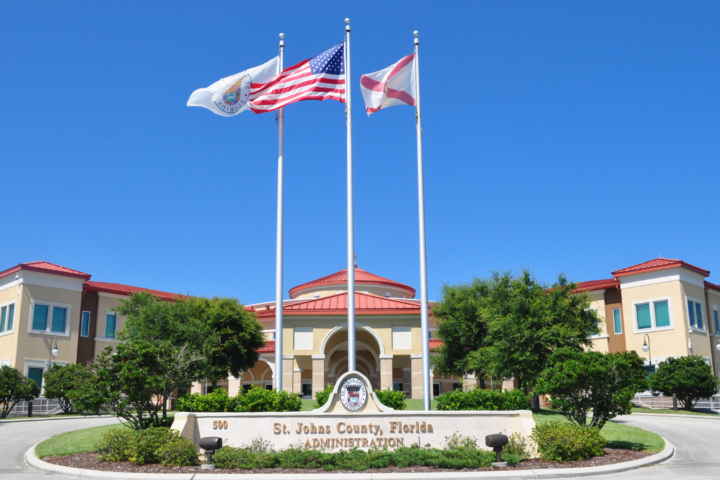SJC Invests $2 Million in LAMP

County Already Protects More Than 30% of Its Land Area
The St. Johns County Board of County Commissioners (BOCC) is investing $2 million in its Land Acquisition Management Program (LAMP). The BOCC approved the Fiscal Year 2025 budget during a public hearing held on Sept. 17. More than 30% of St. Johns County is currently protected from development through various conservation efforts and partnerships at local, state, and federal levels.
“We are excited about this investment in land conservation,” said Ryan Mauch, Environmental Supervisor in the Environmental Division/Growth Management Department. “It will allow us to protect and preserve more natural lands for future generations of St. Johns County residents and visitors to enjoy.”
LAMP was featured during the Aug. 6, 2024, regular meeting, where a conservation update showcased how more than 30% of St. Johns County land is already under conservation protection. More details can be found at www.sjcfl.us/LAMP, which includes an interactive land conservation storyboard, a special LAMP video, and access to the Land Acquisition Application for property nominations.
The LAMP Conservation Board identifies, evaluates, and recommends lands for acquisition in the unincorporated areas of the County for conservation, management, and passive recreational opportunities.
“LAMP, established in 1999, assists with the acquisition and conservation of lands that enhance or promote ecological communities, green space, water resources, and outdoor passive recreation, as well as historic, educational, and scientific activities,” Mauch said. “LAMP ranks lands to best achieve program goals, which include protecting habitats and listed species, providing connections to natural corridors, and protecting cultural resources.”
Some of the St. Johns County conservation lands featured on the website include:
- Fort Matanzas and Rattlesnake Island: 300 acres of Florida coastal environment, featuring dunes, marsh, and maritime forest with threatened and endangered species.
- Anastasia State Park: Thousands of acres of rich ecosystems, including tidal marshes home to dolphins, manatees, sea turtles, and wading birds.
- Faver-Dykes State Park: Borders Pellicer Creek and features wading birds like egrets and herons in tidal marshes.
- Frank B. Butler Park: A sand-dune habitat supporting the threatened gopher tortoise, with direct access to the Matanzas River for water-related recreational activities.
- Guana Tolomato Matanzas National Estuarine Research Reserve (GTMNERR): Nearly 10,000 acres of diverse ecosystems, offering hiking, biking, birdwatching, fishing, and educational opportunities.
- Jack Wright Island: Over 100 acres of forested wetland and freshwater marsh, viewable from County Road 13 North or by boat from the St. Johns River.
- Trout Creek Park and Boat Ramp: Access to nature trails, picnic areas, and a community center for events.
- Stokes Landing Conservation Area: Protects water resources and wildlife habitat, featuring an observation platform for wildlife viewing.
- Moses Creek Conservation Area: A 2,000-acre area with tidal marsh habitat and diverse ecosystems.
- Southeast Intracoastal Waterway Park: Hiking trails through critical habitats for threatened species.
- Alpine Groves Park: Open space with butterfly gardens and a public boardwalk along the St. Johns River.
- Palmo Fish Camp Park and Ramp: A boat ramp providing access to the St. Johns River for fishing and water sports.
- Ocean Hammock Park: An 18-acre area with boardwalk access to the beach and various wildlife.
- Moses Creek Regional Offsite Mitigation Area: A 450-acre property featuring mixed forests and freshwater wetlands.
- McCullough Creek Conservation Area: A 1,400-acre property accessible to the public for passive recreation.
- Six Mile Creek Preserve: A cypress swamp providing important wildlife habitat and water activities.
- San Sebastian River Property (Genovar Property): A 31-acre site with deep-water access for a future public boat ramp.
- Anastasia Lakes Conservation Area: A 50-acre salt marsh property ensuring the preservation of sensitive habitats.
Stay Informed on St. Johns County news and Sign up for our e-newsletters